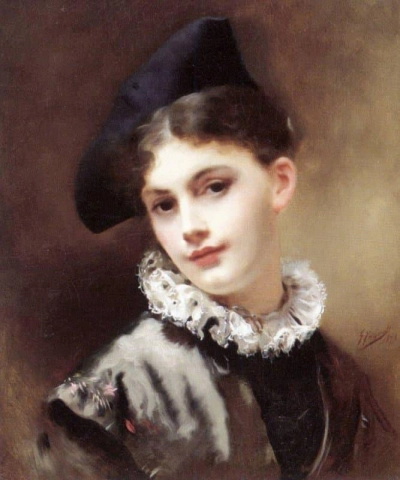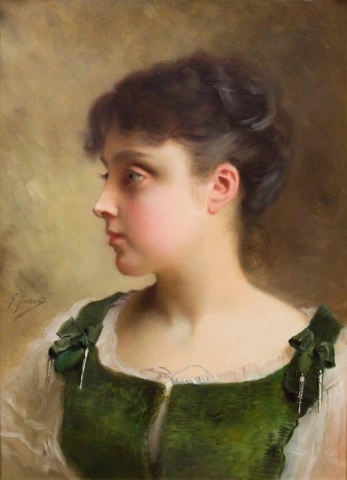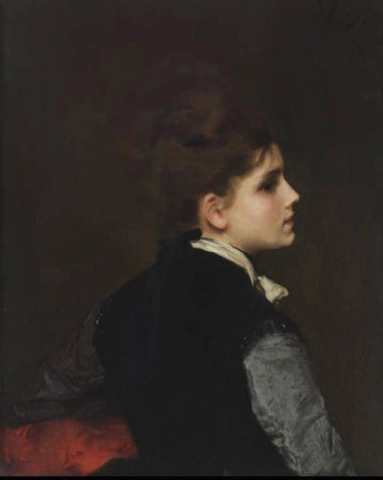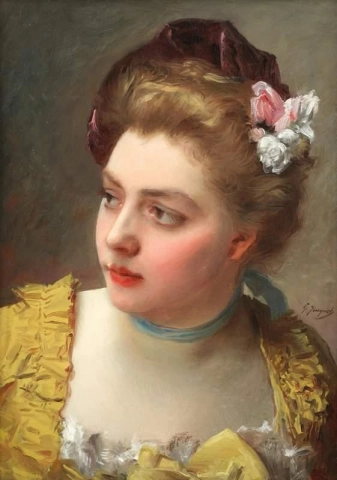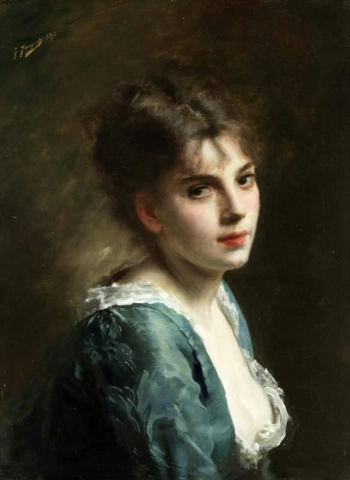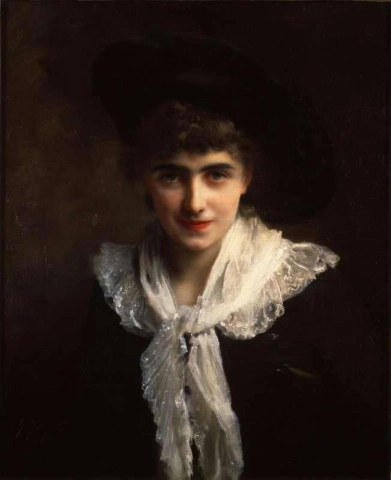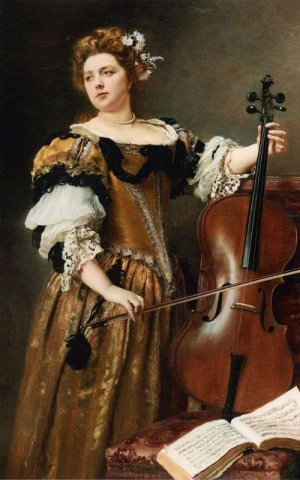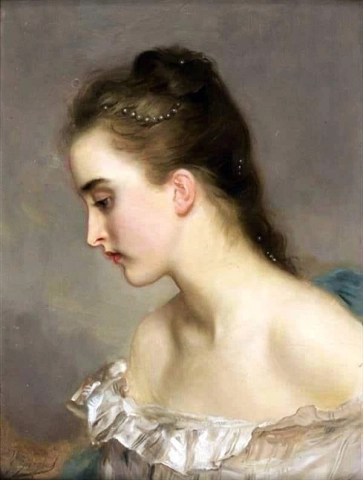

Hand painted reproductions of Gustave Jean Jacquet
Gustave Jean Jacquet: French Academic Painter and Master of Historical Scenes
Gustave Jean Jacquet (1846–1909) was a French painter renowned for his historical and allegorical works, executed with a striking attention to detail and classical precision. Jacquet’s career was shaped by his academic training, and his ability to merge history with vivid realism made him a significant figure in the French art world during the late 19th century. His work, often centered on themes of mythology, history, and romantic ideals, remains appreciated for its technical excellence and narrative depth.
Early Life and Education
Born in Paris in 1846, Gustave Jacquet came from a family with artistic interests. His formative years were marked by exposure to the cultural wealth of the French capital, setting the stage for his eventual pursuit of a career in painting. Jacquet’s early artistic talent was nurtured through his studies at the École des Beaux-Arts, the leading institution for training artists in France.
At the École, Jacquet was trained under prominent teachers and developed a firm grounding in the academic tradition of painting, which emphasized technique, draftsmanship, and the mastery of historical and mythological subjects. This education provided the foundation for his later works, which often revolved around classical themes and the rendering of historical moments with academic rigor and emotional resonance.
Artistic Development and Style
Jacquet’s artistic style reflects his deep commitment to the principles of academic painting, with a focus on historical narratives, mythological allegories, and the depiction of classical ideals. His works are noted for their realistic depiction of figures and settings, coupled with a romanticized portrayal of themes drawn from history and mythology.
-
Historical and Allegorical Themes: Jacquet's most well-known works often depict historical events or mythological narratives. He created dramatic and large-scale works that sought to evoke emotions related to the grandeur of the past. Through his portrayal of heroic deeds, ancient gods, and legendary moments, Jacquet provided viewers with both a visual feast and an intellectual exploration of history and classical ideals. His works often incorporated allegorical figures and mythological creatures to symbolize abstract concepts such as freedom, victory, and the triumph of virtue.
-
Attention to Detail: One of Jacquet's most striking artistic features was his meticulous attention to detail. Whether in the folds of a figure’s clothing, the texture of the background, or the expressions on his subjects’ faces, Jacquet’s paintings showcased the academic precision that was highly valued during his time. His rendering of light, texture, and anatomy demonstrates his proficiency in the classical training he received.
-
Classical Composition: Jacquet's works adhered to the principles of classical composition. His figures were often posed in grand, heroic stances, reminiscent of the antique world. His careful use of symmetry, balance, and dynamic composition allowed him to create visually arresting scenes that resonated with viewers both intellectually and emotionally.
-
Romantic Realism: While rooted in academic training, Jacquet’s work can also be seen as an embodiment of romantic realism. He infused his historical and mythological subjects with emotion and drama, drawing on the traditions of romantic painting that emphasized personal expression and the exploration of profound human themes.
Major Works and Themes
Throughout his career, Jacquet tackled a range of themes that reflected his interest in history, mythology, and allegory. His works were frequently exhibited at the Paris Salon, where they garnered attention for their ambitious subject matter and exceptional craftsmanship.
-
"The Triumph of Apollo": One of Jacquet’s most celebrated works is "The Triumph of Apollo," a large-scale painting that depicts the Greek god Apollo in a dramatic, allegorical scene. This painting showcases Jacquet’s ability to fuse mythological storytelling with a grand artistic vision. The figures are imbued with a sense of motion and energy, and the scene is filled with symbolism representing the victory of intellect, light, and reason.
-
"The Battle of the Amazons": Another well-known painting by Jacquet is "The Battle of the Amazons," which presents a dynamic and dramatic depiction of the legendary Amazons, warrior women from Greek mythology. The scene is filled with movement, with the clash of warriors depicted in vivid detail. The painting’s composition highlights Jacquet’s technical expertise and his ability to capture both the heroic and the tragic aspects of human conflict.
-
Allegories of Virtue and Heroism: Throughout his career, Jacquet created numerous allegorical works in which he personified abstract virtues such as justice, freedom, and glory. These works are marked by their symbolic richness and their depiction of heroic figures engaged in mythological or historical acts of valor and sacrifice. Jacquet’s allegories often served as moral lessons, elevating the virtues of the classical world to the status of timeless ideals.
-
Academic Portraits and Historical Figures: In addition to his mythological and allegorical works, Jacquet also painted a series of portraits and historical scenes. These works reflected his skill in capturing the personality and emotion of his subjects, whether they were historical figures or imagined characters from the past. These paintings helped solidify his place as one of the leading painters of his generation.
Recognition and Influence
Jacquet’s work earned him widespread recognition in France and beyond. He was a frequent exhibitor at the Paris Salon, where his works were often praised for their technical mastery and classical elegance. His ability to blend the idealism of classical art with the dramatic emotions of romanticism ensured his place among the leading artists of his time.
Although Jacquet’s fame waned somewhat after his death in 1909, his influence can still be felt in the continued appreciation of academic painting. His works helped preserve and promote the values of historical realism and allegorical symbolism during a time when modern art movements such as Impressionism and Post-Impressionism were gaining prominence.
Legacy
Today, Gustave Jean Jacquet is remembered as one of the key figures of the French academic tradition. His large-scale historical and allegorical paintings continue to inspire admiration for their technical precision, romantic flair, and profound exploration of classical and mythological themes.
Jacquet’s works are housed in major museums and collections across France, including the Musée d'Orsay and the Musée des Beaux-Arts in Paris, where they serve as a testament to his ability to blend classical traditions with the expressive potential of modern Romanticism.
Where to Find Reproductions of Gustave Jean Jacquet’s Art
For those interested in experiencing the grandeur of Gustave Jean Jacquet’s work, POD (Painting On Demand) offers oil painting reproductions of his finest pieces. These reproductions bring Jacquet’s classical compositions and allegorical themes into modern homes, allowing art lovers to experience his celebrated historical and mythological scenes.
Imagine owning an original-style painting by one of the greatest artists in history. At POD, we offer you the chance to make this dream a reality. Each canvas is faithfully reproduced down to the smallest detail, allowing you to experience the beauty of the artist’s vision in your own home.
Our reproductions are crafted by experienced painters using the finest materials and time-honored methods. We are committed to delivering works of exceptional quality that will inspire and bring joy to your family for generations to come.

